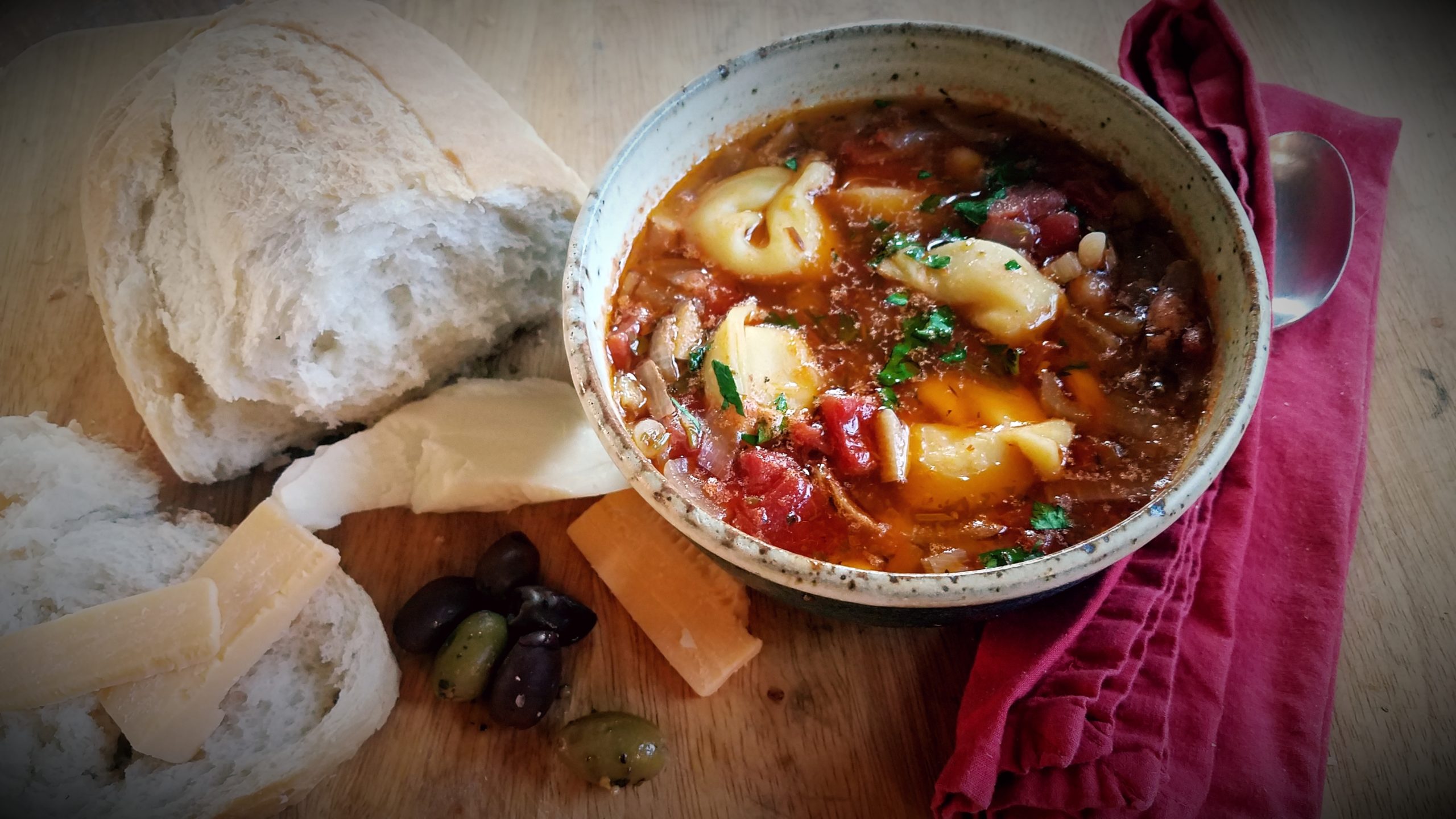Monk Soup – Zuppa di Pasta e Fagioli
As a momma of three who has been homeschooling for twenty-five years, I discovered early on that the unit study was the best fit for my family of creatives. If WWII was the topic, we planted a few Victory Garden plants, listened to old radio shows, played the music and movies, and prepared the recipes. Immersing ourselves into the era was like time traveling! When we studied the medieval period and early church history, I pulled Brother Victor-Antoine d’Avila-Latourrette’s cookbook Twelve Months of Monastery Soups off the shelf and researched what the brothers might enjoy on a cold night. The book features recipes that are simple and hearty, and served by Brother Victor at the monastic table at Our Lady of the Resurrection Monastery in New York.
My kids chose this recipe for Zuppa di Pasta e Fagioli because of its similarity to another family-favorite Italian dish called Pasta Fagioli (fa-ZOOL). We christened our medieval selection ‘Monk Soup.’ Our version uses homemade chicken stock, but this wonderfully flexible soup can be vegetarian if you use a vegetable broth, and vegan by leaving out the Parmigiano-Reggiano. I serve the soup with rustic bread, olives, special deli cheeses like sharp cheddar and brie, speck ham, and a shallow bowl of olive oil and herbs.
You use:
1-2 medium-sized onions, finely chopped
½ c. extra virgin olive oil
4 garlic cloves, chopped (I use 8-ish. Italian families double the suggested amounts of garlic!)
1 28-ounce can chopped Italian tomatoes with the juice
1 bay leaf
1 teaspoon dried or fresh rosemary, chopped
1 teaspoon dried or fresh basil, chopped
¼ c. fresh Italian parsley, chopped
4 cups (two cans) cannellini beans, drained and rinsed
6 cups stock (chicken or vegetable)
1 c. dry white wine
salt and freshly ground pepper to taste
1 box or bag of your favorite orzo, ditalini, or tortellini
Grated Parmigiano-Reggiano and additional olive oil
Note 1 – We use homemade chicken stock. To make a batch, save the bones from a rotisserie chicken. Place them in a pot with a quartered onion and a carrot or two, cover with water, and simmer for about two hours. Strain and use immediately or freeze for later.
Note 2 – Amounts of garlic and herbs are to your taste. Wine is optional.
Note 3 – Cook the pasta in a separate pot, not in the soup, or the broth will become starchy and the pasta will overcook.
You cook:
First, sauté the onion in olive oil in a large stock pot until soft, then add garlic and cook for 3-4 minutes more, stirring continuously.
Add the chopped tomatoes with their juice, bay leaf, rosemary, basil, and parsley. Cook over medium heat for about 5 minutes or until the mixture attains a smooth, thick texture. Stir often.
Add the beans, stock, wine, salt, and pepper. Stir slowly and bring to a low boil. Turn down to simmer and cook 15 minutes more, stirring occasionally. Turn off the heat, remove the bay leaf, cover the pot, and let the soup rest for another 10 minutes.
While the soup is resting, prepare the pasta in another pot according to package directions. Drain and return to its cooking pot, adding a small scoop of broth to prevent pasta from sticking together.
To serve, scoop pasta into a soup bowl and ladle soup over the pasta. Sprinkle with cheese, a pinch of chopped parsley, and drizzle a bit of olive oil over the top.
Serves 6
Download the recipe!
The featured image is courtesy of Annie Nardone and used with her kind permission for Cultivating and The Cultivating Project.
Annie Nardone is a lifelong bibliophile with a special devotion to the Inklings and medieval authors. She is a Fellow with the C.S. Lewis Institute and holds an M.A. in Cultural Apologetics from Houston Christian University. Annie is the Director of Visual Artists for The Cultivating Project and columnist for Cultivating Magazine. She is founding board member, managing editor, and author for the apologetics quarterly, An Unexpected Journal. Her writing can also be found as travel blogger for Clarendon Press U.K., with published poems at Calla Press and Poetica.
She holds a MA in Cultural Apologetics from Houston Christian University, and is a Fellow with the C.S. Lewis Institute. Annie writes for Cultivating, Literary Life, and Clarendon House Books, and is a managing editor and writer for An Unexpected Journal. Annie collaborated on three books in 2022, published by Square Halo Books and The Rabbit Room. She recently designed a curriculum detailing the intersection of theology, the arts, and history and is a Master Teacher for HSLDA. She resides in Florida with her Middle Earth/Narnia/Hogwarts-loving family, and an assemblage of sphynx cats and feline foundlings.
Leave a Reply



Add a comment
0 Comments